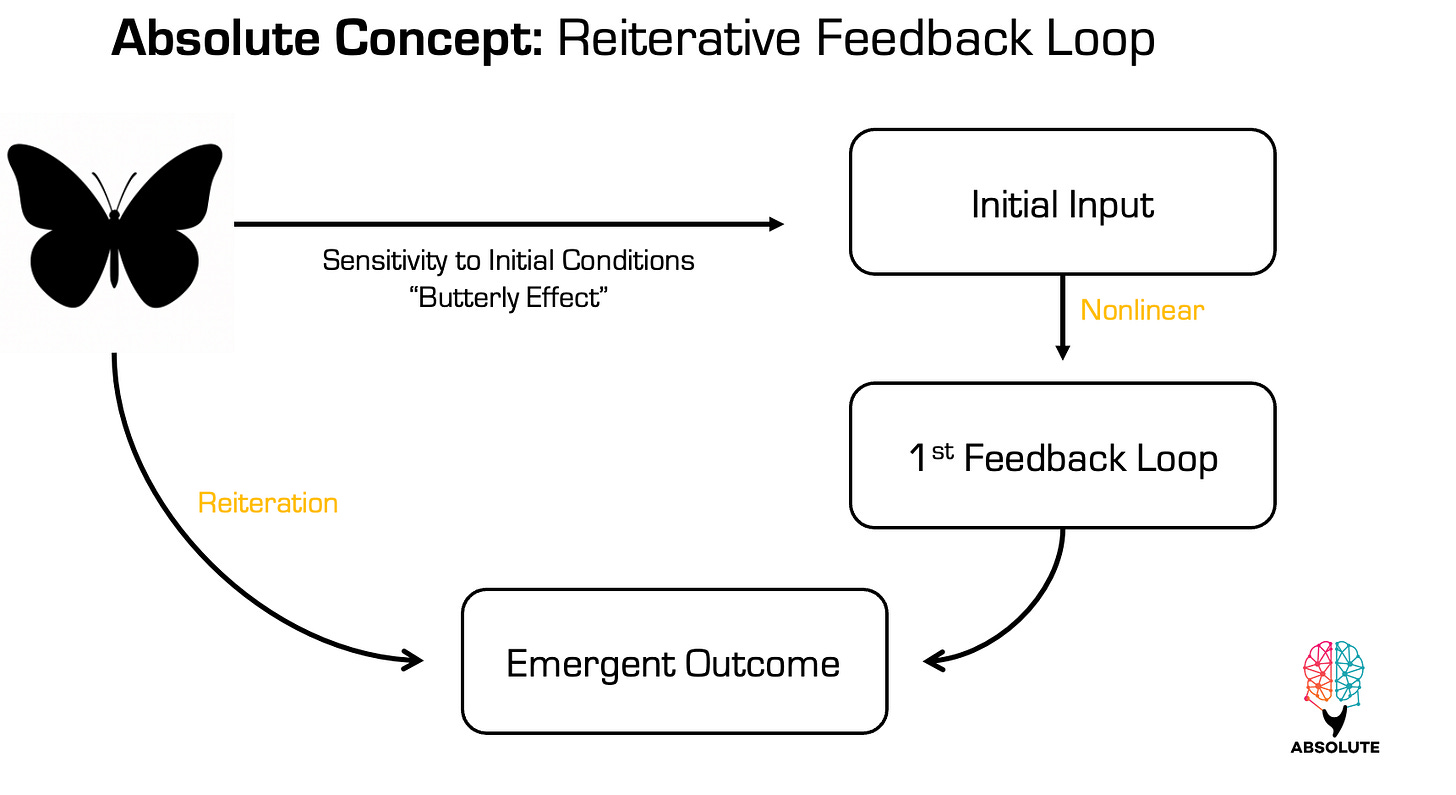Absolute Visual: Reiterative Feedback Loop
The feedback loop of real time information flow we utilize to program treating and training in real time--in conjugation.

Clinical Programming Occurs in Real Time
In the treatment setting, once you’ve established Point A, it’s time to execute inputs—plural, not singular. This is Conjugate in the Clinic—not buzz the booboo with a Theragun.
The findings at Point A—performance history, injury history, treatment/training history, table assessments + CARs analysis (FRA)—tell you which ecologies are eligible for propagating work. Biological or neurological—elements of Point B. Once we have that information—treatment targets, we have what we need to act—in real-time, right now.
Point B Constrained Work
We are performing propagating work to Point B in the clinic. We are behaving as agents of change, not only stacking passive modalities that have overrun high-performance settings—red light therapy, ultrasound machines, vibration guns, and butter knifes. Calm down, we are not saying these modalities don’t have a place (we do believe butter knifes are strictly for butter though)—but let’s be clear: passive modalities do not shift the capacity-versus-demand dynamic on their own.
Physiological Fact: Passive modalities have poor transfer of treatment to Point B. They can help the regenerative process actualize faster, but they don’t stimulate the change treatment does.
And that’s the real reason the athlete is in front of you: they lack the capacity (Point B)—at the level of adaptation—required for the demands they’re engaging with at the level of competition.
Our job in the clinic is to stimulate the development of one or more Point B capacities. That is how we start to change the asymmetry in the capacity vs demands dynamic back to the athletes favor. This is how we become agents of change. This is how we get the athlete on the roadmap to Point B. And that’s where the reiterative feedback loop begins.
The Science of Reiterative Programming
A reiterative feedback loop is a cyclical process where seemingly small initial changes are repeatedly amplified through the system, with each cycle of the loop building on the previous.
By using this loop the programmer has the ability to create small changes through each reiterative cycle ultimately leading to larger and larger changes over time. It is important to note that the inputs used to create the change on each cycle remain the same, which is why it is termed reiterative, however, the ordering (sequence) of each input can vary depending on the system’s (athlete’s) response to the previous cycle.
Thinking of the clinical strategy in this way allows the programmer to create small changes that if left to be would only lead to short-term effects, but by adding inputs that build on the output of the last, feeds back into the system repeatedly therefore influencing future states in increasingly complex and non-linear ways.
Understand: When you are programming with our Conjugate in the Clinic strategy, those non-linear ways are not random. They are specific and directional. They are propagating the athlete directionally towards Point B.
Here is the reiterative feedback loop:
Keep reading with a 7-day free trial
Subscribe to Absolute: The Art and Science of Human Performance to keep reading this post and get 7 days of free access to the full post archives.





